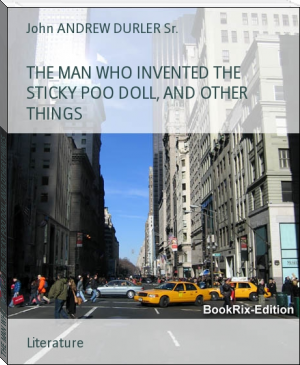A Crystal Age, W. H. Hudson [most read books of all time TXT] 📗

- Author: W. H. Hudson
Book online «A Crystal Age, W. H. Hudson [most read books of all time TXT] 📗». Author W. H. Hudson
This lovely window gave a fresh charm to the whole apartment, while the sunlight falling through it served also to reveal other beauties which I had not observed. One that quickly drew and absorbed my attention was a piece of statuary on the floor at some distance from me, and going to it I stood for some time gazing on it in the greatest delight. It was a statue about one-third the size of life, of a young woman seated on a white bull with golden horns. She had a graceful figure and beautiful countenance; the face, arms and feet were alabaster, the flesh tinted, but with colors more delicate than in nature. On her arms were broad golden armlets, and the drapery, a long flowing robe, was blue, embroidered with yellow flowers. A stringed instrument rested on her knee, and she was represented playing and singing. The bull, with lowered horns, appeared walking; about his chest hung a garland of flowers mingled with ears of yellow corn, oak, ivy, and various other leaves, green and russet, and acorns and crimson berries. The garland and blue dress were made of malachite, lapis lazuli, and various precious stones.
"Aha, my fair Phoenician, I know you well!" thought I exultingly, "though I never saw you before with a harp in your hand. But were you not gathering flowers, O lovely daughter of Agenor, when that celestial animal, that masquerading god, put himself so cunningly in your way to be admired and caressed, until you unsuspiciously placed yourself on his back? That explains the garland. I shall have a word to say about this pretty thing to my learned and very superior host."
The statue stood on an octagonal pedestal of a highly polished slaty-gray stone, and on each of its eight faces was a picture in which one human figure appeared. Now, from gazing on the statue itself I fell to contemplating one of these pictures with a very keen interest, for the figure, I recognized, was a portrait of the beautiful girl Yoletta. The picture was a winter landscape. The earth was white, not with snow, but with hoar frost; the distant trees, clothed by the frozen moisture as if with a feathery foliage, looked misty against the whitey-blue wintry sky. In the foreground, on the pale frosted grass, stood the girl, in a dark maroon dress, with silver embroidery on the bosom, and a dark red cap on her head. Close to her drooped the slender terminal twigs of a tree, sparkling with rime and icicle, and on the twigs were several small snow-white birds, hopping and fluttering down towards her outstretched hand; while she gazed up at them with flushed cheeks, and lips parting with a bright, joyous smile.
Presently, while I stood admiring this most lovely work, the young man I have mentioned as having raised Yoletta from the ground at the grave came to my side and remarked, smiling: "You have noticed the resemblance."
"Yes, indeed," I returned; "she is painted to the life."
"This is not Yoletta's portrait," he replied, "though it is very like her;" and then, when I looked at him incredulously, he pointed to some letters under the picture, saying: "Do you not see the name and date?"
Finding that I could not read the words, I hazarded the remark that it was Yoletta's mother, perhaps.
"This portrait was painted four centuries ago," he said, with surprise in his accent; and then he turned aside, thinking me, perhaps, a rather dull and ignorant person.
I did not want him to go away with that impression, and remarked, pointing to the statue I have spoken of: "I fancy I know very well who that is—that is Europa."
"Europa? That is a name I never heard; I doubt that any one in the house ever bore it." Then, with a half-puzzled smile, he added: "How could you possibly know unless you were told? No, that is Mistrelde. It was formerly the custom of the house for the Mother to ride on a white bull at the harvest festival. Mistrelde was the last to observe it."
"Oh, I see," I returned lamely, though I didn't see at all. The indifferent way in which he spoke of centuries in connection with this brilliant and apparently fresh-painted picture rather took me aback.
Presently he condescended to say something more. Pointing to the marks or characters which I could not read, he said: "You have seen the name of Yoletta here, and that and the resemblance misled you. You must know that there has always been a Yoletta in this house. This was the daughter of Mistrelde, the Mother, who died young and left but eight children; and when this work was made their portraits were placed on the eight faces of the pedestal."
"Thanks for telling me," I said, wondering if it was all true, or only a fantastic romance.
He then motioned me to follow him, and we quitted that room where it had been decided that we were not to sup.
Chapter 4
We came to a large portico-like place open on three sides to the air, the roof being supported by slender columns. We were now on the opposite side of the house and looked upon the river, which was not more than a couple of hundred yards from the terrace or platform on which it stood. The ground here sloped rapidly to the banks, and, like that in the front, was a wilderness with rock and patches of tall fern and thickets of thorn





Comments (0)